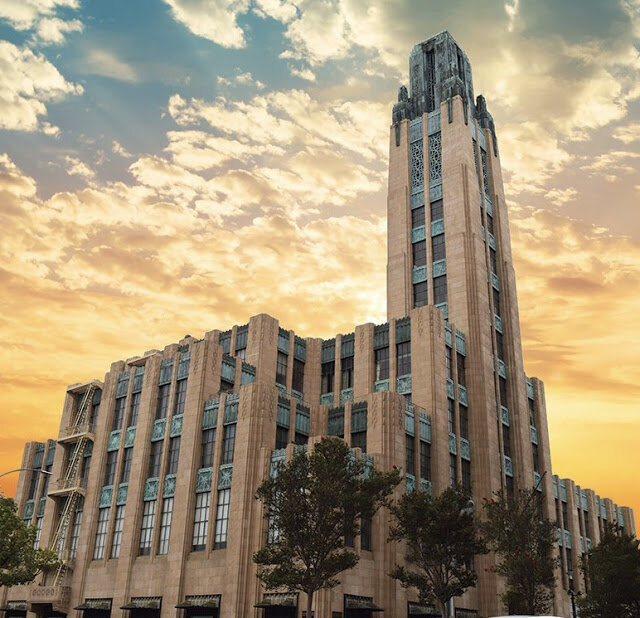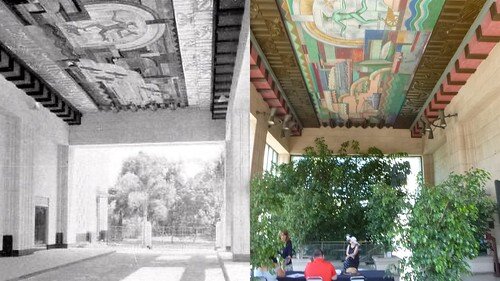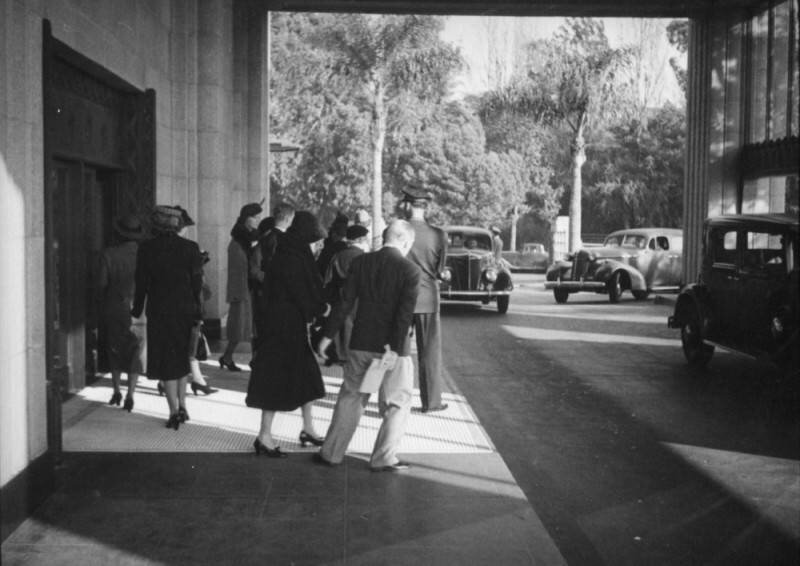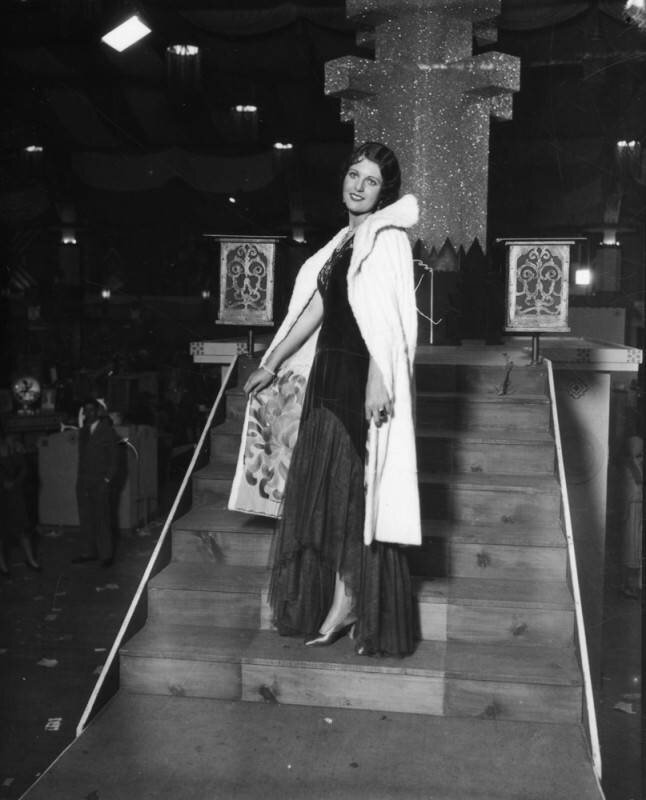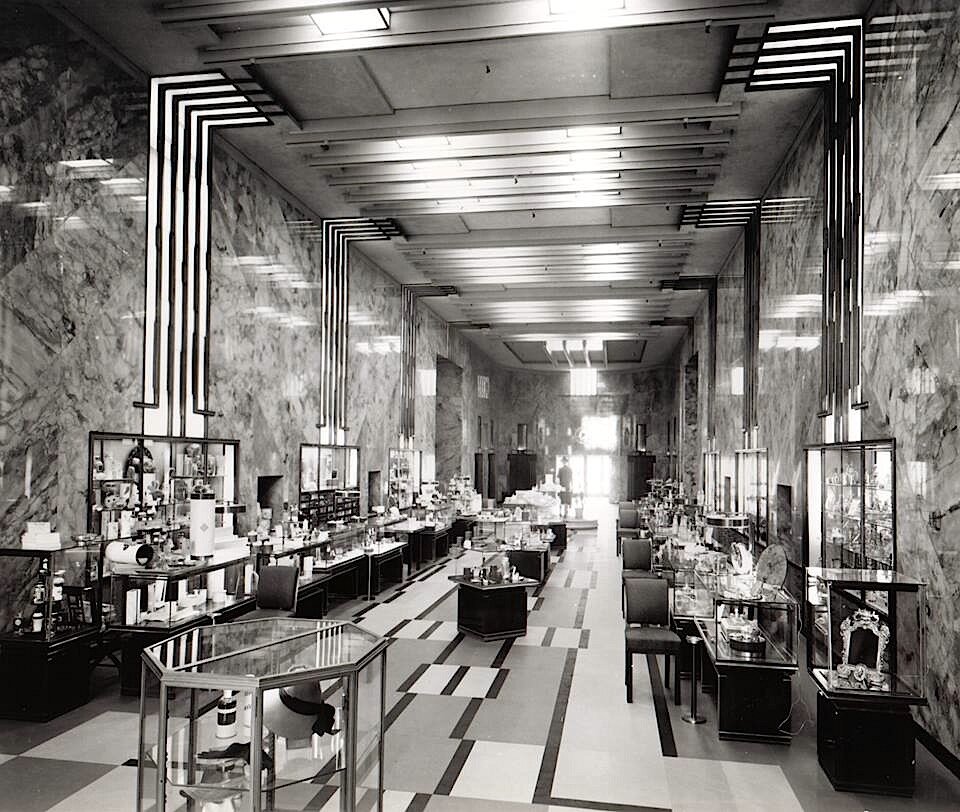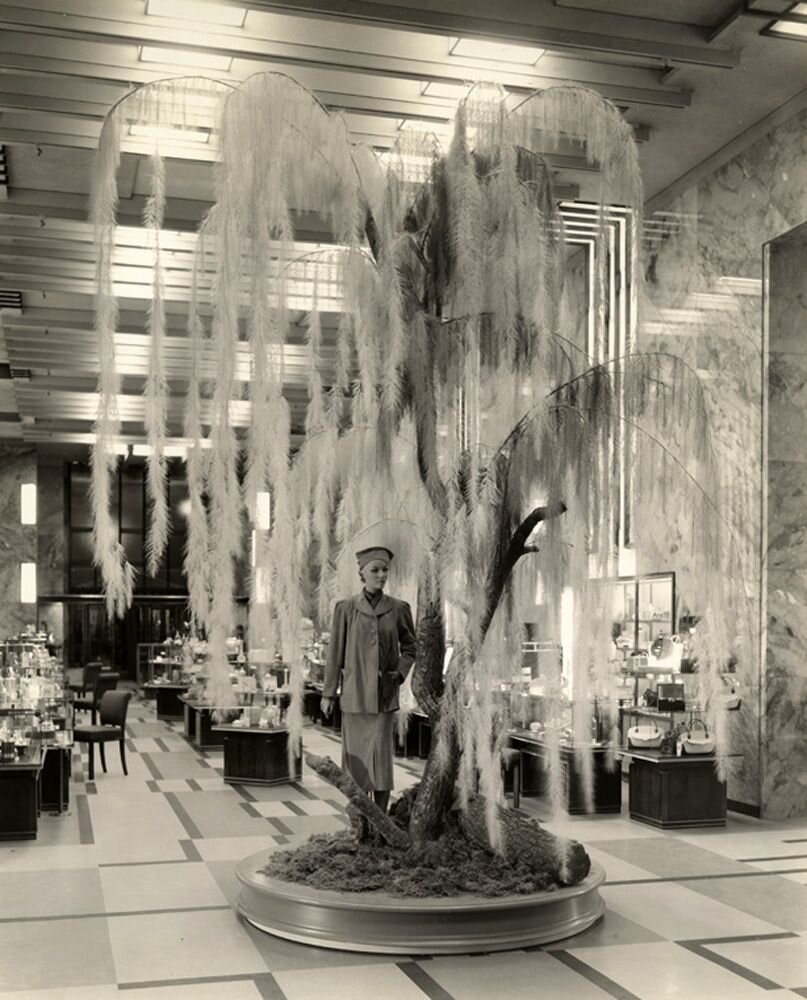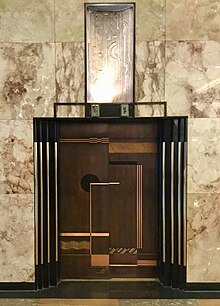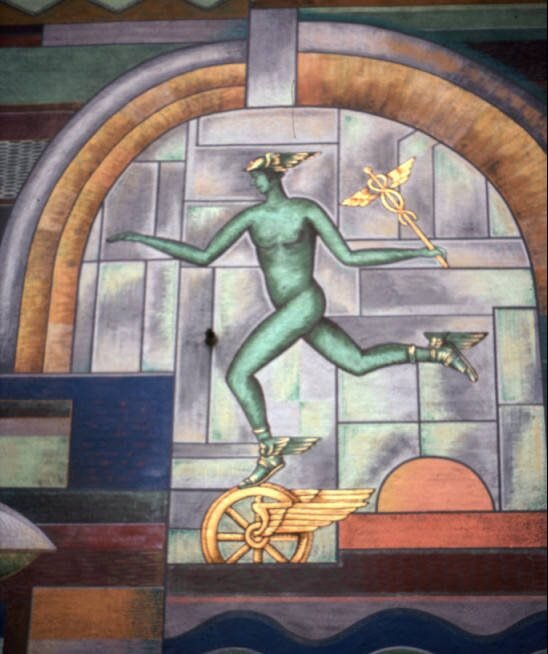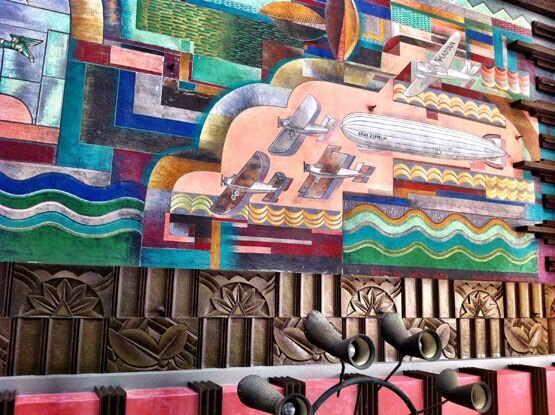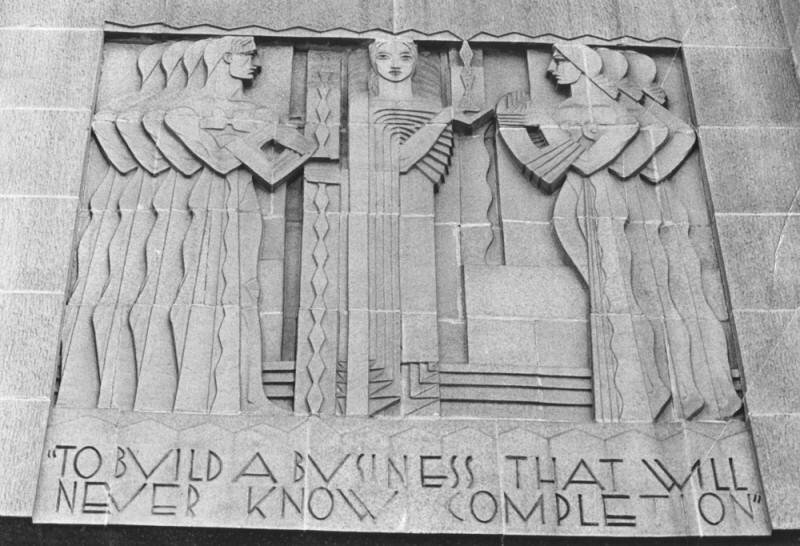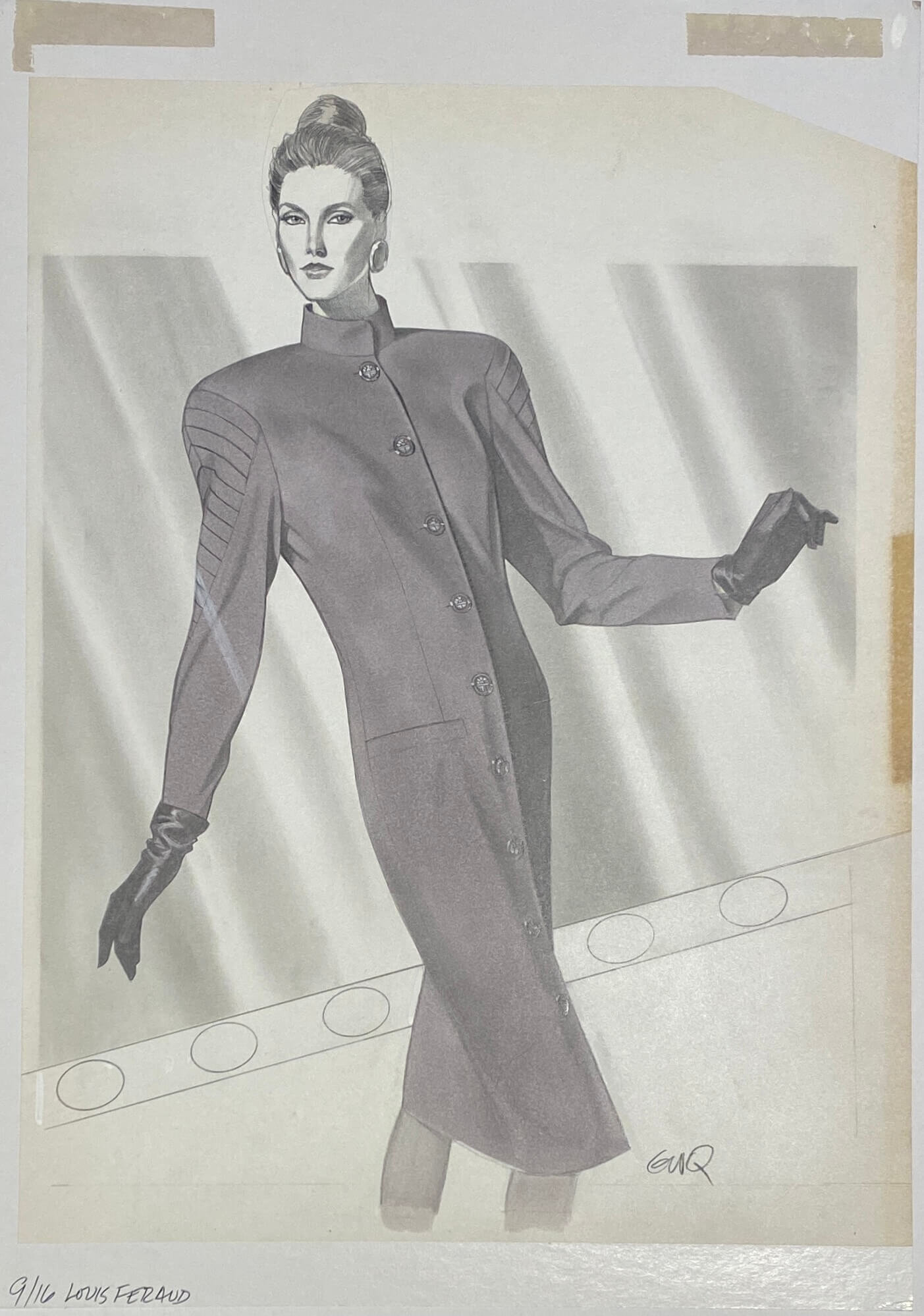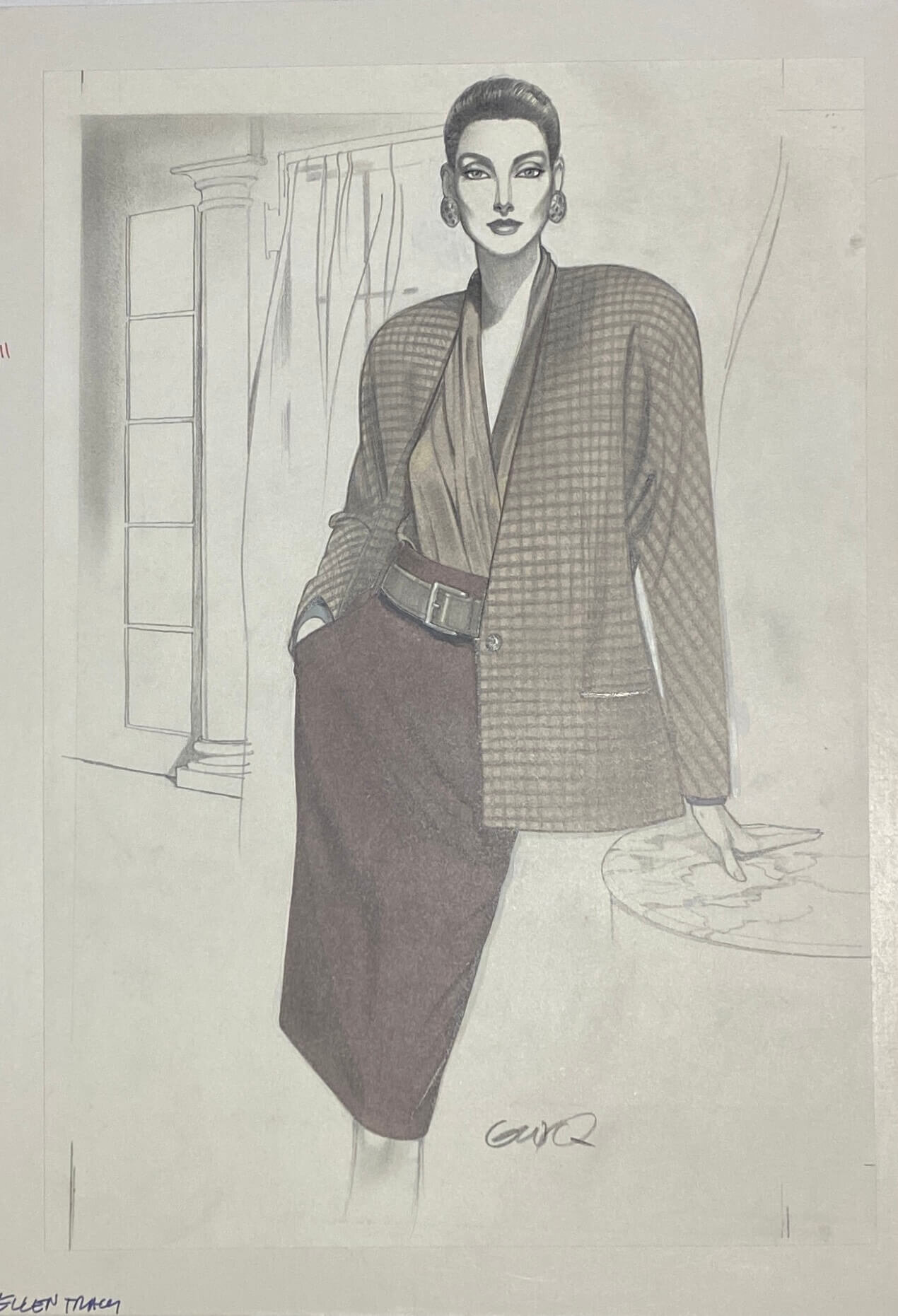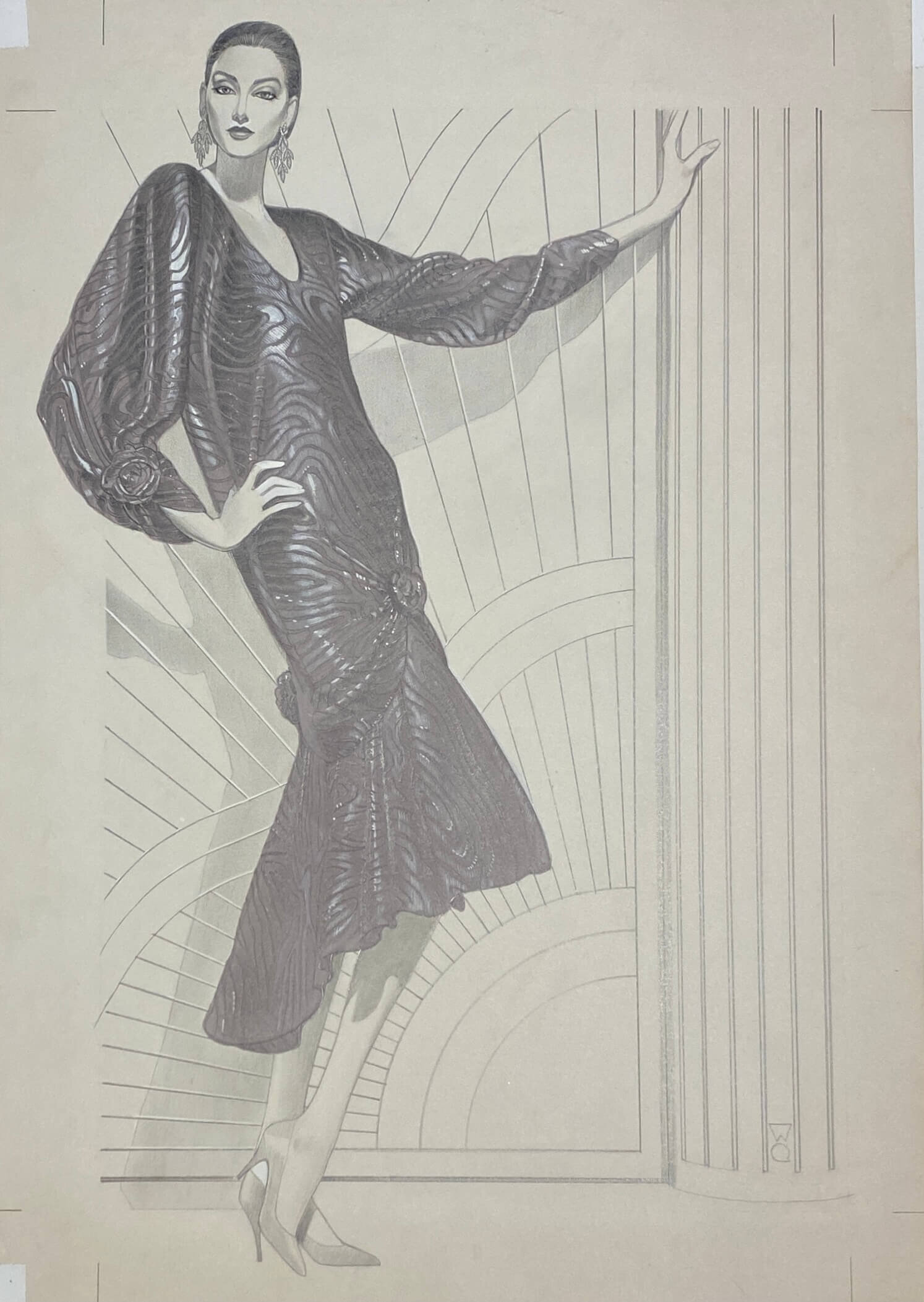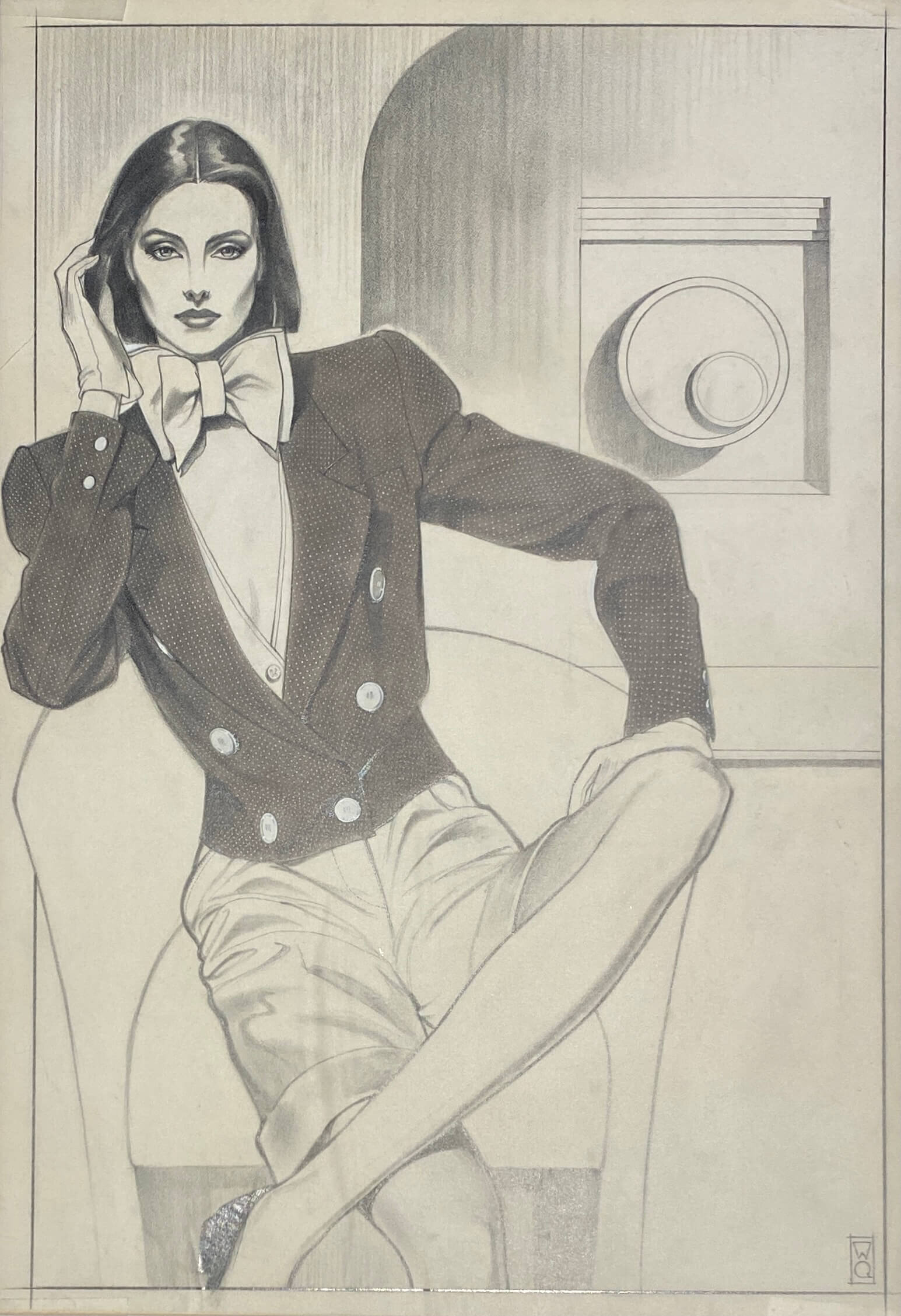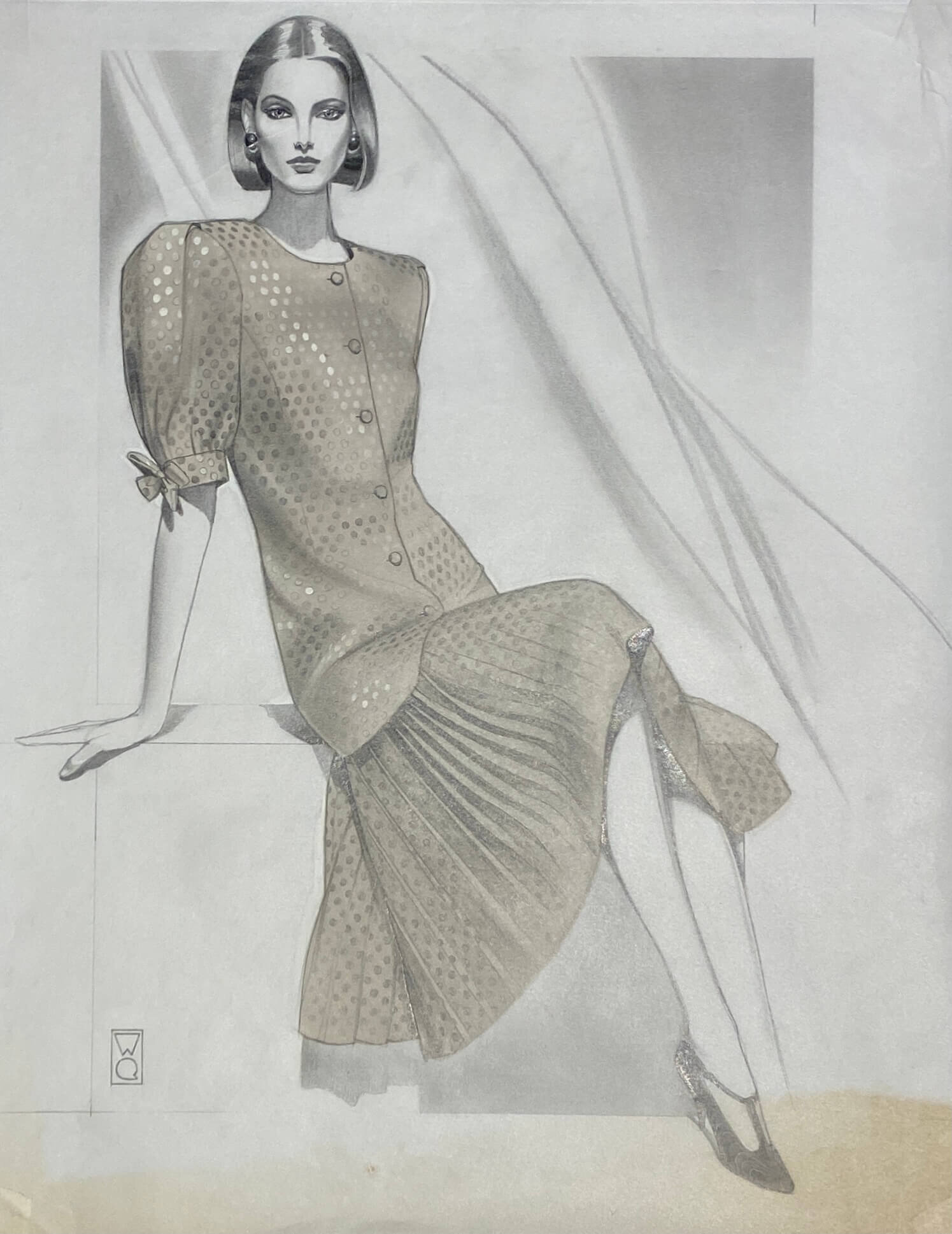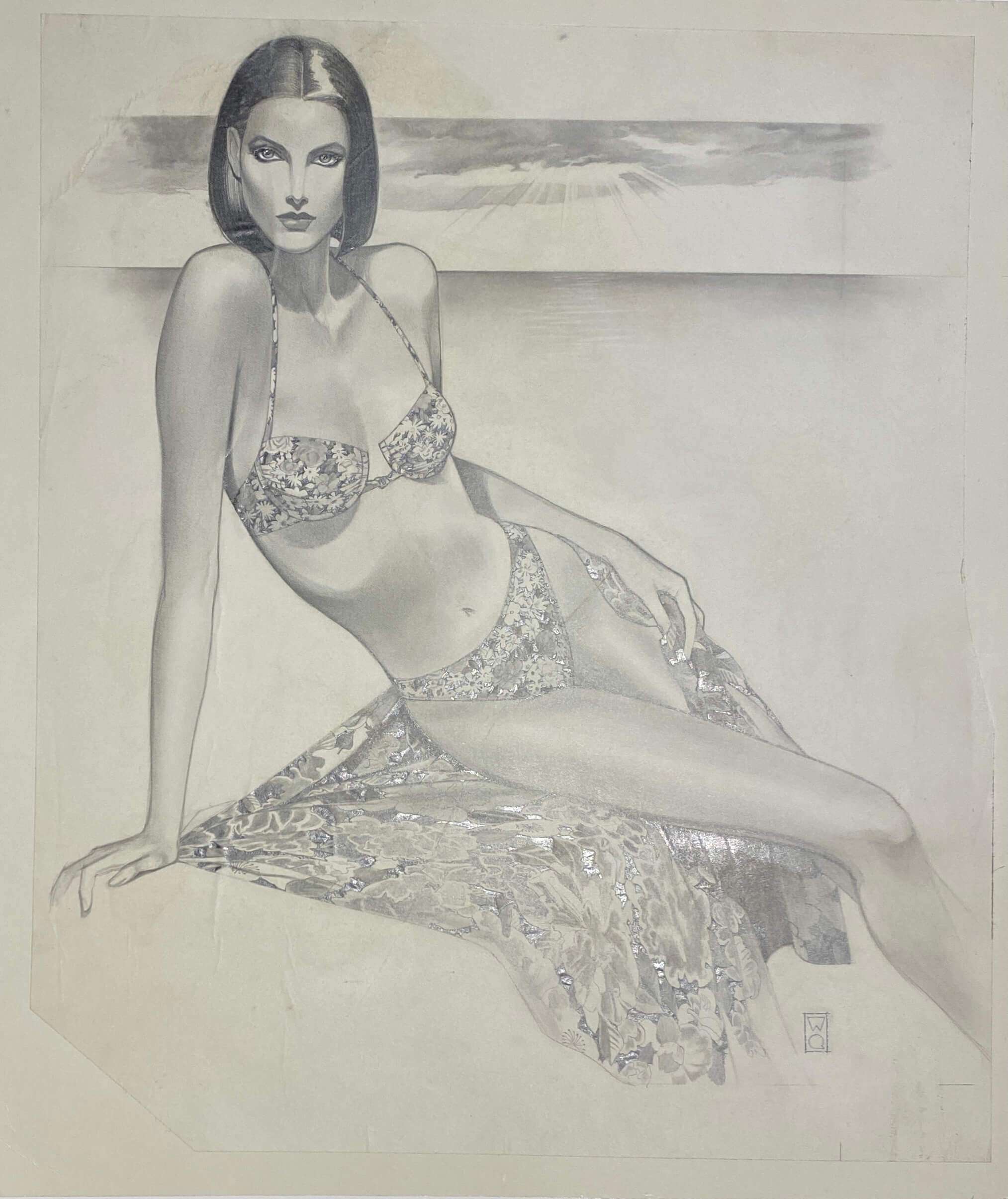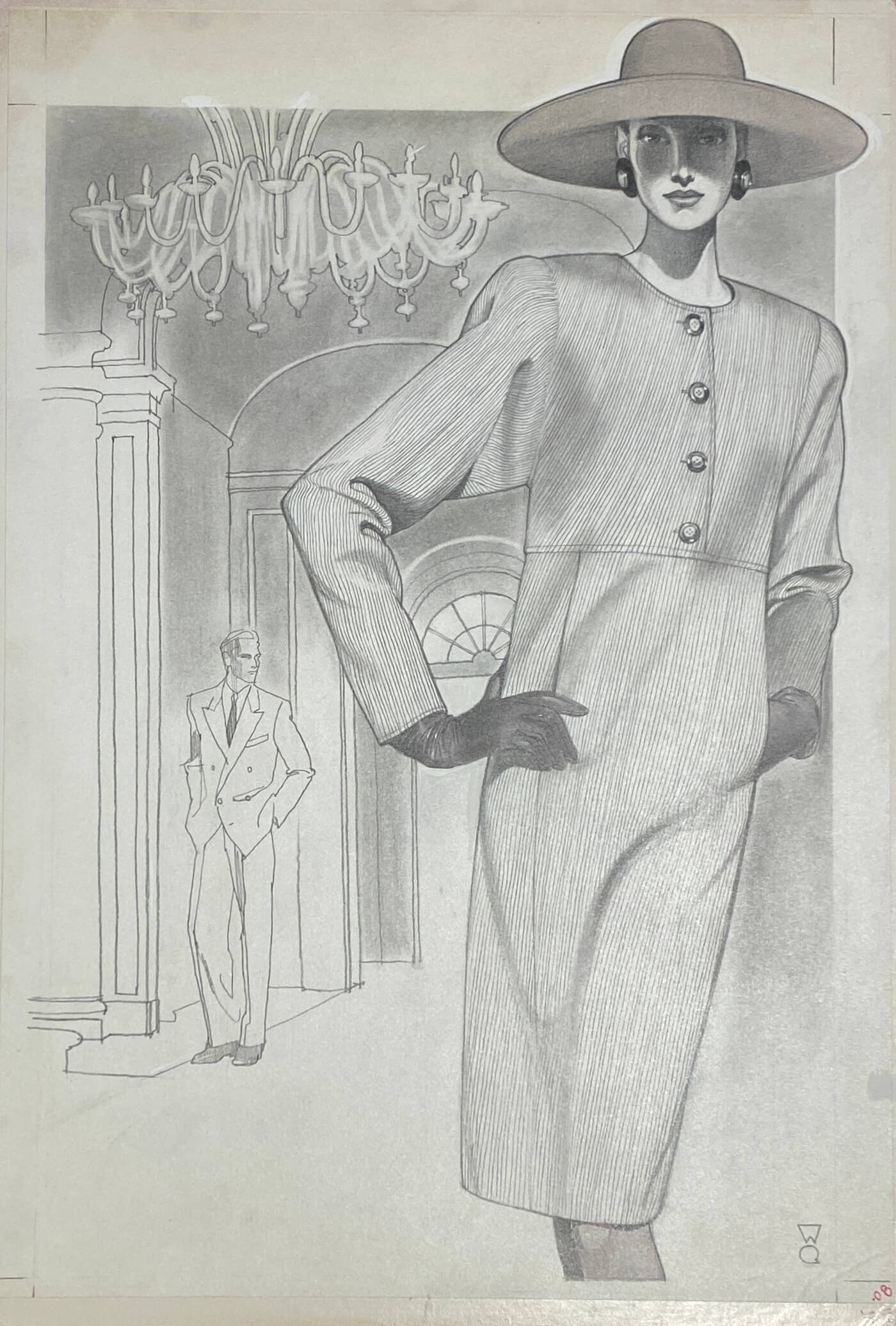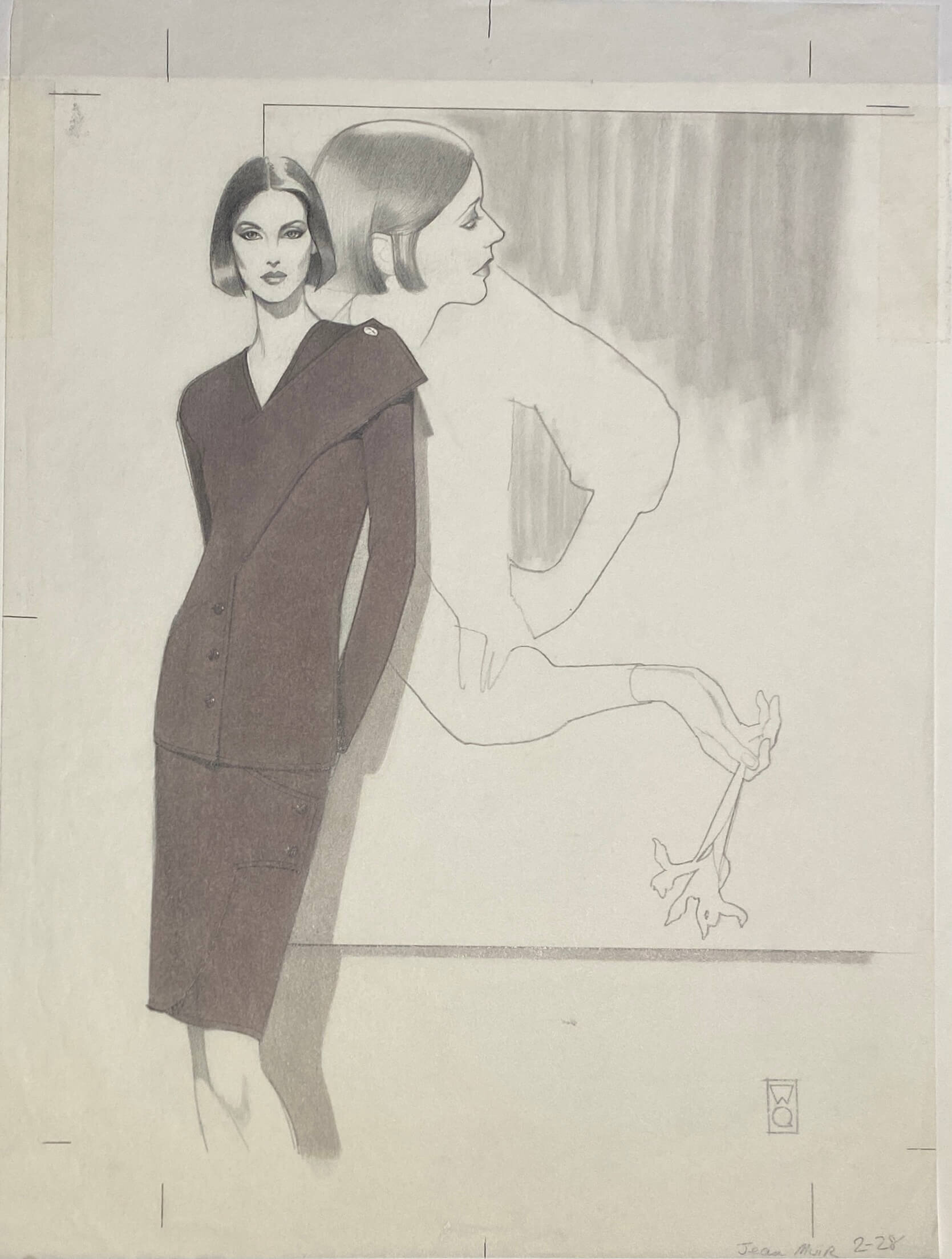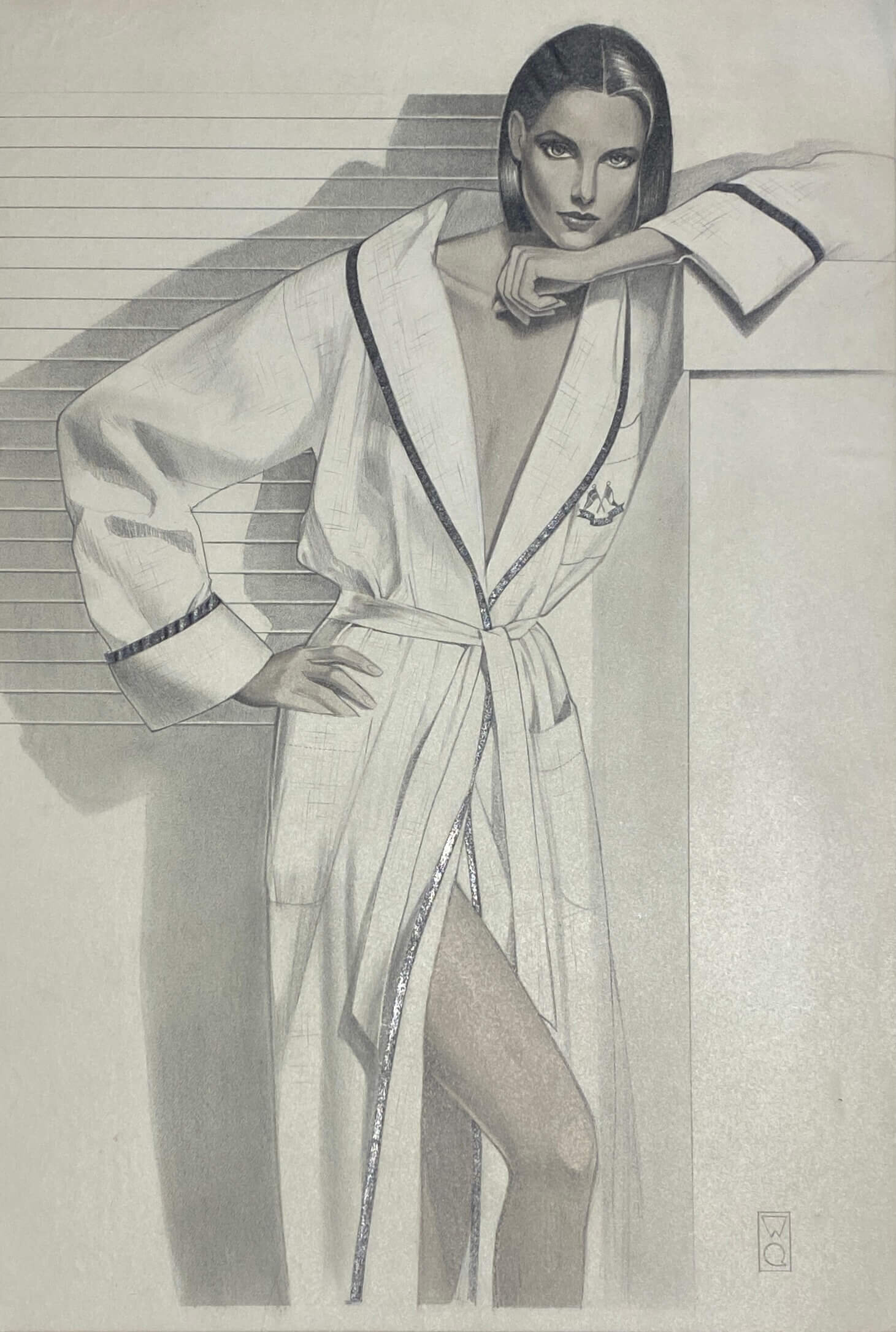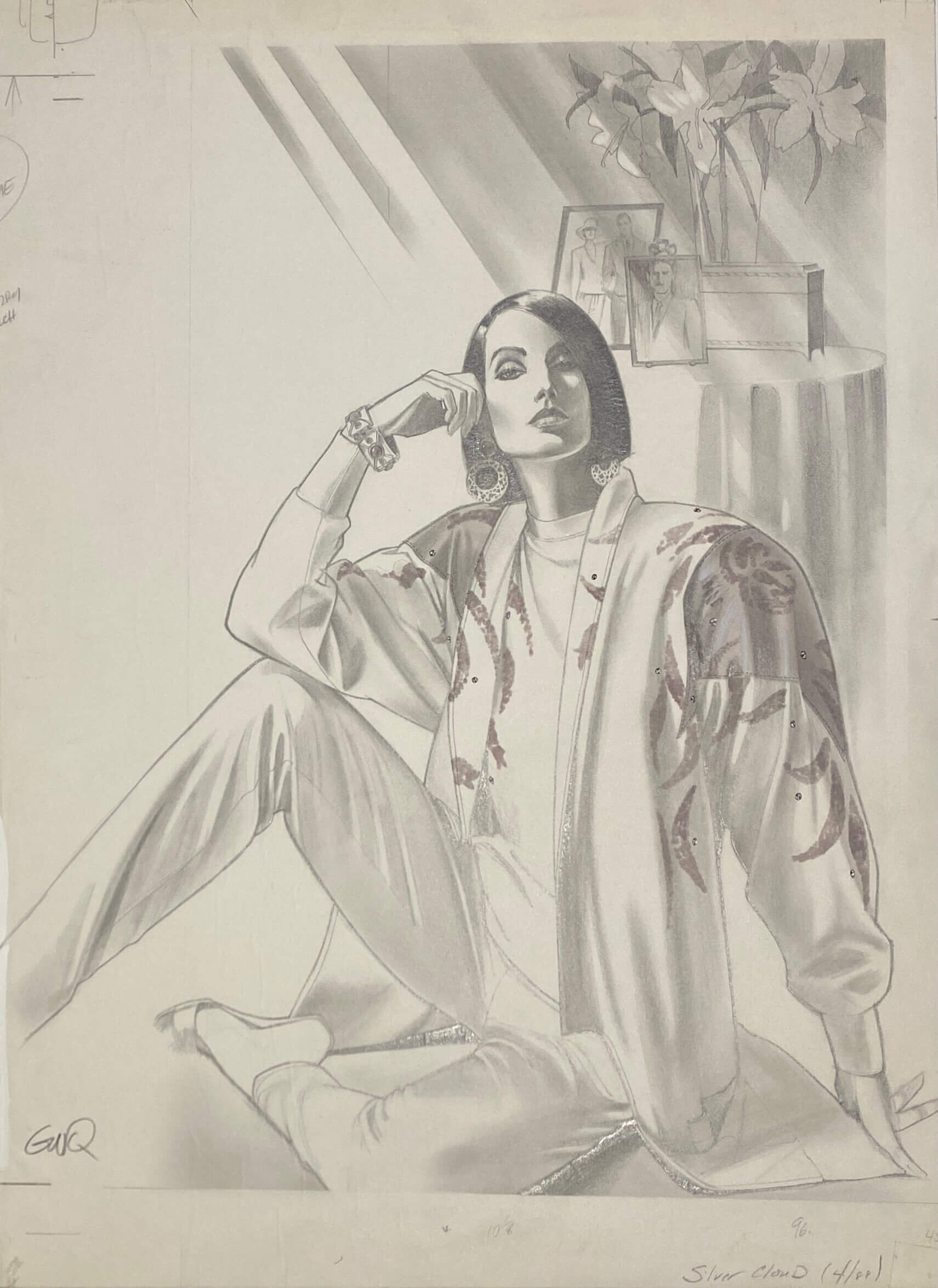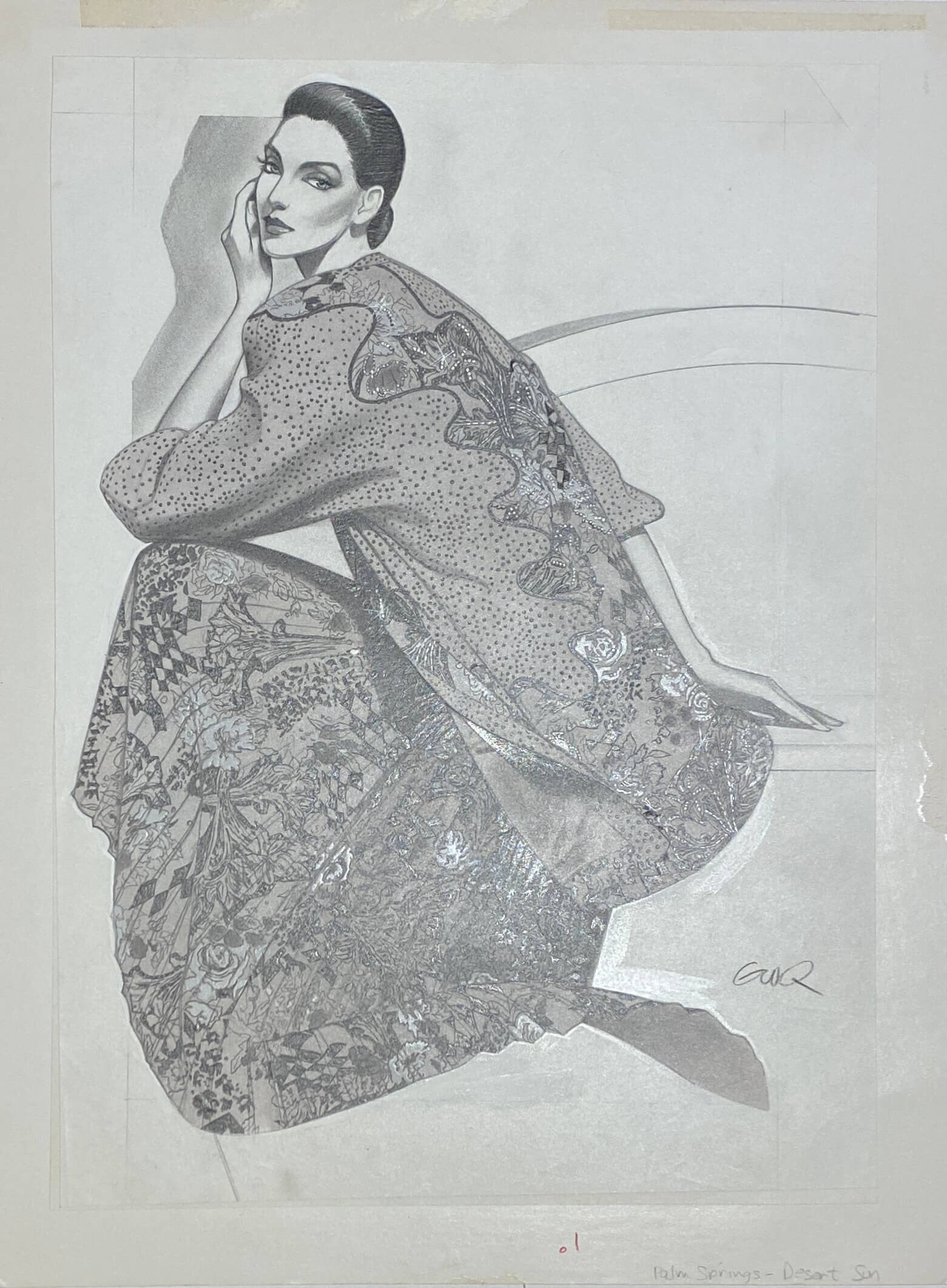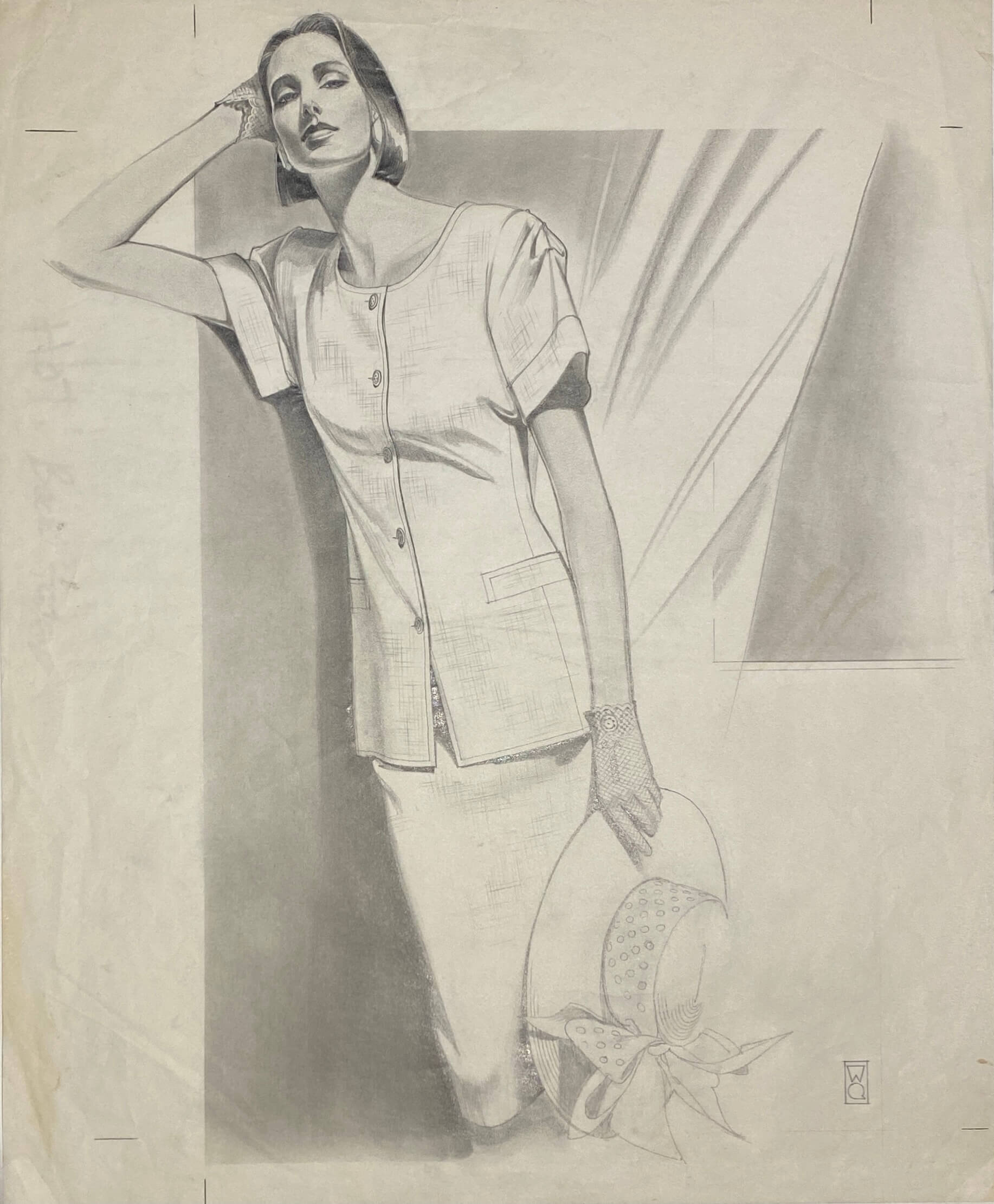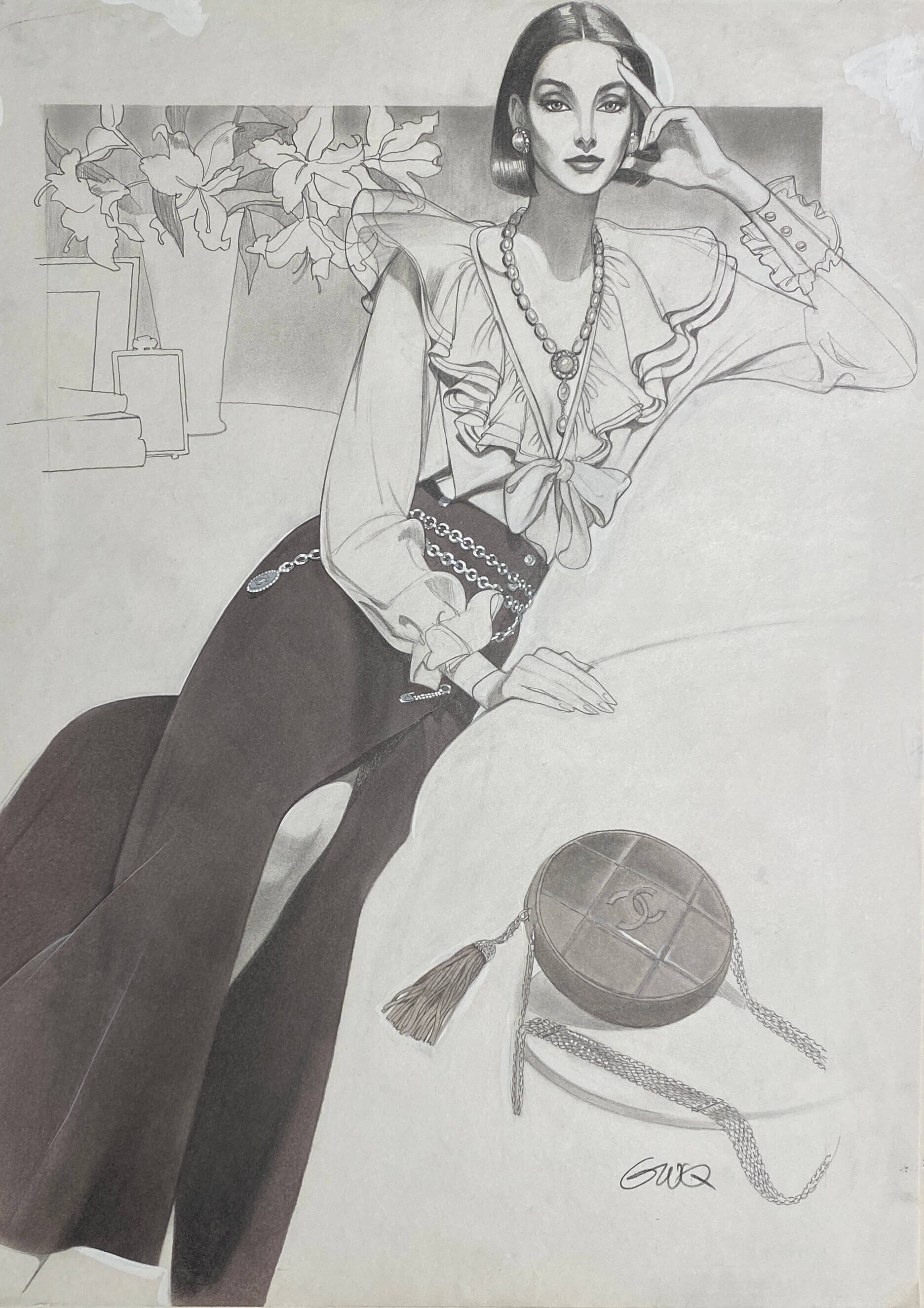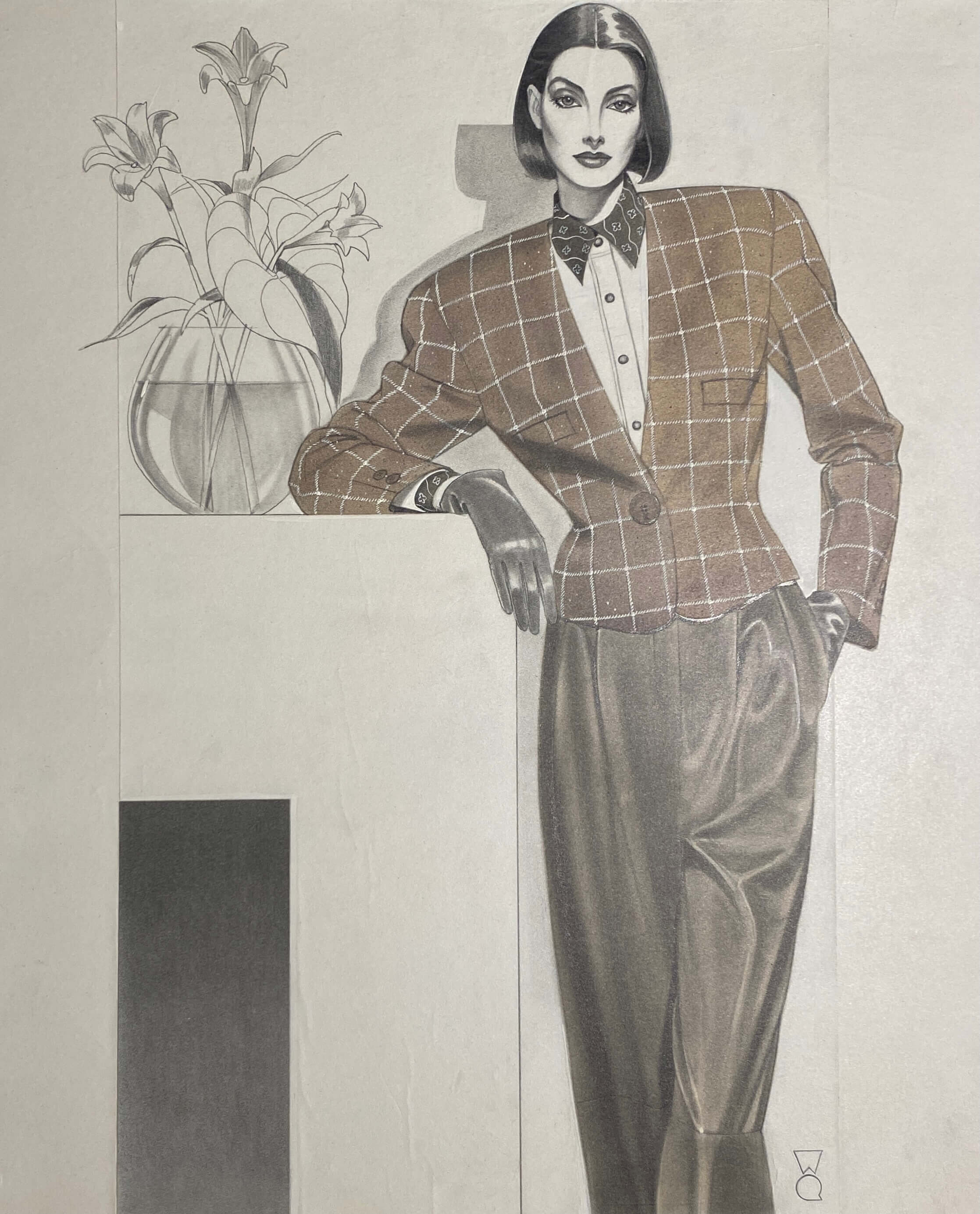Gregory Weir-Quiton’s distinctive illustrative style was largely developed and defined during a 10 year period where he worked with Bullocks Wilshire in Los Angeles. Gregory had moved from Chicago to Los Angeles in 1961 and over the next 20 years he illustrated for retailers in the fashion industry including The May Company, J.W. RobinsonCo., The Broadway, I. Magnin, and Bullocks Wilshire. It was his relationship with Bullocks Wilshire specifically though that would prove definitive for both Bullocks Wilshire (BW) and Gregory Weir-Quiton (GWQ). BW proposed a ten year contract with Gregory in 1981, during which time they wanted a certain look to their illustrations that embodied the women’s luxury specialty store and the lifestyle they were selling. They told GWQ to conceptualize the ideal women; they called her the “Bullocks Wilshire Woman.”
As specified by Bullocks Wilshire, the BW Woman had to be 5’11” tall, weigh 114lbs, wear a size 4 dress, have dark hair, be an international woman with European features but slightly ambiguous with idealized fuller lips, noticeable nostrils and a defined bone structure.
To understand the BW Woman, you first have to understand the Bullocks Wilshire building itself and the gilded lifestyle that shopping at BW embodied. The Bullocks Wilshire building, located at 3050 Wilshire Boulevard in Downtown Los Angeles, is a gleaming example of LA Art Deco architecture and styling; opened in September of 1929, this magnificent building created the cornerstone of the elegant entertainment district. Shoppers in the early twentieth century would typically arrive at BW on a streetcar or by a private automobile, Hollywood and LA’s elite were of course chauffeured, where they were immediately greeted by an awestruck art deco mural in the porte-cochère titled ’Spirit Transportation.’
As with most department and luxury specialty stores, Bullocks Wilshire was geared towards women. According to historian Michael Windover, “The modern activity of shopping was closely associated with women, and certainly by the 1920s, department stores were well-established places of female public culture.” The store was famous for its service and amenities, with fashion shows, personal shoppers and an elegant tearoom; shoppers were treated to an elegance and opulence creating an unique experience rivaling the best department and luxury specialty stores around the world. Mothers would take their daughters to BW to teach them about elegance and sophistication. When Gregory was working in the building, he would hear stories from elderly women about how they had come to the Bullocks Wilshire tearoom with their mother’s when they were young. As a high class speciality store, BW would host magnificent events with famous people from around the world; Gregory himself met fashion designers like Christian Lacroix and even Royalty like Queen Elizabeth’s Sister, Princess Margaret, Countess of Snowdon.
The “Bullocks Wilshire Woman” had to represent the elegant ambience and history of the store, while at the same time being the most contemporary, stylish and cultured of women in the 1980s. Photography was popular at the time, but BW preferred illustration because it allowed them to create a more unique and idealized style that embodied BW, and photography didn’t reproduce as well in newspaper print where illustrations reproduced beautifully. The art directors gave Gregory a description of what this woman would look like; she would be affluent, well traveled, sophisticated and of course beautiful beyond imagination. Details of the woman went down to how tall she was, what she weighed, what size clothes she wore and even down to her facial features.
Gregory then started to fabricate the ideal women for Bullocks Wilshire around 1983. He created a beautiful representation for BW with the illustrations of the woman he had created from their specifications. To tie in the Art Deco style of the BW building, Gregory used designs and patterns from the BW building itself; including the elevator doors, the details on the facade and other interior decor as backgrounds for his illustrations. The gigantic Art Deco murals were a main source of inspiration for Gregory too.
Gregory Weir-Quiton would have live models come into his studio to pose in the clothes he was illustrating. In the 80’s Gregory’s studio was only a couple of blocks away from the Bullocks Wilshire building. He would walk to BW to pick up clothes, jewelry and accessories to bring them back to the studio to draw. Some poses took him over 7 hours to finish, so GWQ would take polaroid pictures to keep as reference. In his 10 year contract with Bullocks Wilshire, Gregory had agreed to create 1,000 illustrations each year for BW; in the end, Gregory had created almost 7,000 illustrations of this woman!
These illustrations are a lasting memory of the golden era at Bullocks Wilshire. They encapsulated the history of BW, the impact they had on fashion and the modern woman.
An Inside Look at Restored Art Deco Bullocks Wilshire by Spectrum News.


